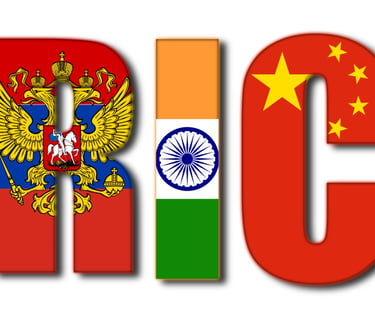Introduction:
De-dollarization, is an irreversible and inevitable global phenomenon. The most significant effects will likely be felt by the United States and Europe.
The End of Dollar Dominance:
The era of US dollar dominance and its hegemony is gradually fading, making way for a more equitable global landscape. This transition is not just economic; it embodies evolving global dynamics.
Historical Teachings and Modern Transition:
This transition aligns with the teachings of the Bhagavad Gita, a holy book from around 5000 years ago which says:
कर्मण्येवाधिकारस्ते मा फलेषु कदाचन । मा कर्मफलहेतुर्भूर्मा ते सङ्गोऽस्त्वकर्मणि ॥
karmaṇyevādhikāraste mā phaleṣu kadācana ।
mā karmaphalaheturbhūrmā te saṅgo’stvakarmaṇi ॥
This verse can be translated as:
“You have a right to perform your prescribed duties, but you are not entitled to the fruits of your actions. Never consider yourself to be the cause of the results of your activities, nor be attached to inaction.”
The Root Cause:
De-dollarization challenges the disproportionate advantage that the US dollar grants the United States in the global economy. This currency can create funds for deficits, control foreign policies, and impose sanctions through its SWIFT network control, impacting economies and politics.
Emergence of De-dollarization:
The shift away from the US dollar gained momentum in the early 2000s. The US invasion of Iraq in 2003 prompted countries to question the dollar’s stability. Iraq’s choice to trade oil in euros in 2000 signaled a challenge to the dollar’s monopoly in the oil market.
Global Triggers:
Critical events like Iran’s shift to euros for oil exports in 2007 and Venezuela’s introduction of the Petro2 cryptocurrency to bypass sanctions in 2008 expedited de-dollarization. The 2008–2009 global financial crisis highlighted the fragility of the dollar-based system and ignited calls for change.
Sanctions as Catalysts:
Imposing penalties became a potent strategy for the US and Europe. Examples include Iran’s disconnection from SWIFT in 2012, sanctions on Russian entities in 2014–2015, and the US restricting Venezuela’s PDVSA and CITGO due to support for Nicolás Maduro in 2019. Additionally, in 2021, the US warned North Korea of nuclear-related sanctions and urged China to sever financial ties. Between 2020 and 2021, Turkey was cautioned over purchasing Russian missiles. Moreover, the 2022 post Ukraine-Russia conflict saw the US employ the dollar once again as a weapon, imposing economic restrictions on Russia and its partners. These instances highlight the risks of depending on the dollar-controlled financial system.
Alternative Paths and Reflection:
Countries sought alternative routes due to these actions by US & Europe, accelerating the de-dollarization process.
Conclusion:
The global shift away from the US dollar is not only an economic change but also a reflection of the evolving global dynamics. De-dollarization, backed by historical events and modern challenges, points toward a future where the dollar’s hegemony is replaced by a more balanced multipolar world order. As we delve deeper into the topic in future articles, we’ll explore the strength of BRICS, the gold-backed currency, the CIA’s role in de-dollarization, India’s efforts, and more. Stay tuned for these insights.

